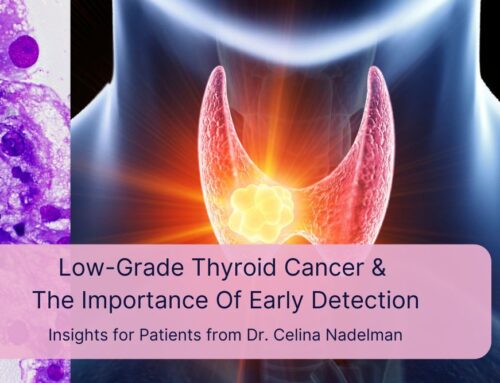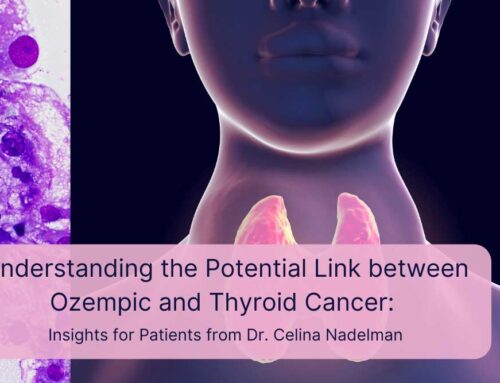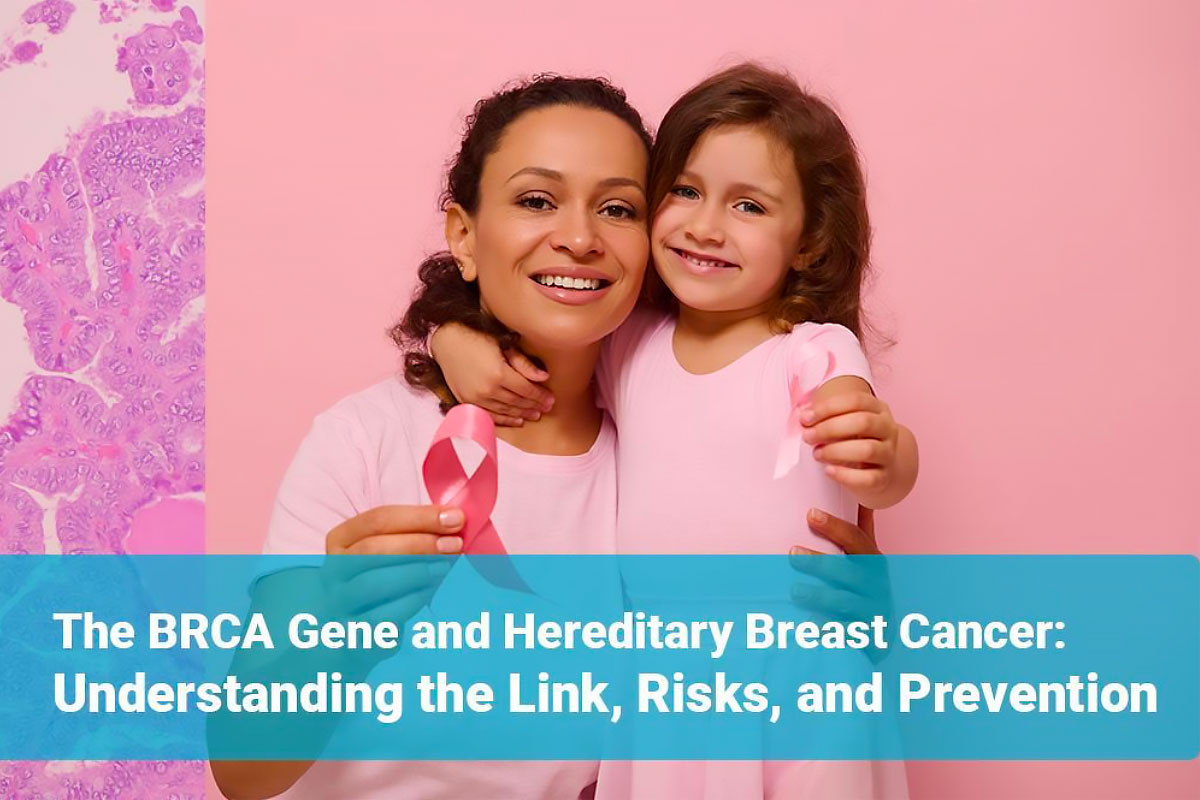
Table of Contents
- Introduction To The BRCA Genes
- The Role of BRCA1 Mutation and BRCA2 Mutation
- Understanding Mutations
- The Risks Associated With Hereditary Breast Cancer Risk
- Inheritance of BRCA Mutations
- Patterns of Cancer Risk
- Prevalence in Specific Populations
- Criteria for BRCA Genetic Testing
- Understanding Your Personalized Risk Landscape
- The Process of BRCA Genetic Counseling and Testing
- Tailored Prevention: Beyond a One-Size-Fits-All Approach
- Empowering Strategies
- Conclusion
Introduction To The BRCA Genes
Dear Patient,
Breast cancer has a strong genetic component and is a major public health concern. Particularly, a major factor in the hereditary vulnerability to breast and ovarian cancer is mutations found in the BRCA1 and BRCA2 genes. The BRCA1 and BRCA2 genes play a pivotal role in maintaining the integrity of our DNA, acting as critical guardians against cancer development. Understanding the science behind these genes and how mutations increase breast cancer risk is essential for anyone navigating the complexities of hereditary breast cancer.
The Role of BRCA1 Mutation and BRCA2 Mutation
At the cellular level, our bodies are constantly under assault by factors that can damage DNA, leading to potentially harmful mutations. The BRCA1 and BRCA2 genes produce proteins that are crucial for repairing DNA double-strand breaks—a particularly severe form of DNA damage. These proteins function diligently to identify and repair DNA double-strand breaks, preventing chromosomal rearrangements and mutagenic events that fuel the cancer to occur. By fixing these breaks, the BRCA proteins prevent mutations that could lead to uncontrolled cell growth, the hallmark of cancer.
Think of BRCA1 and BRCA2 as specialized repair technicians. BRCA1, like a mechanic, works in various ways to fix DNA breaks and ensure things run smoothly. BRCA2, an engineer, focuses on a specific repair method called homologous recombination, ensuring DNA is patched up precisely.
These genes are classified as tumor suppressor genes because they help control cell growth and division. BRCA proteins are key in preserving genetic information and preventing tumor development when they function correctly.
Understanding Mutations
Mutations in the BRCA1 and BRCA2 genes impair the body’s ability to repair damaged DNA. These mutations can be inherited from a parent, and individuals who inherit a harmful BRCA mutation carry it in every cell. The result is an increased lifetime risk of developing breast and ovarian cancers, among others.
Not all BRCA mutations will lead to cancer; the risk can vary widely depending on the mutation’s nature and other genetic and environmental factors. However, research has shown that women with harmful BRCA1 or BRCA2 mutations have a significantly elevated risk of developing breast cancer compared to the general population. While the average woman has a 12-13% risk of developing breast cancer in her lifetime, for women with a BRCA mutation, the risk can increase to as high as 70%.
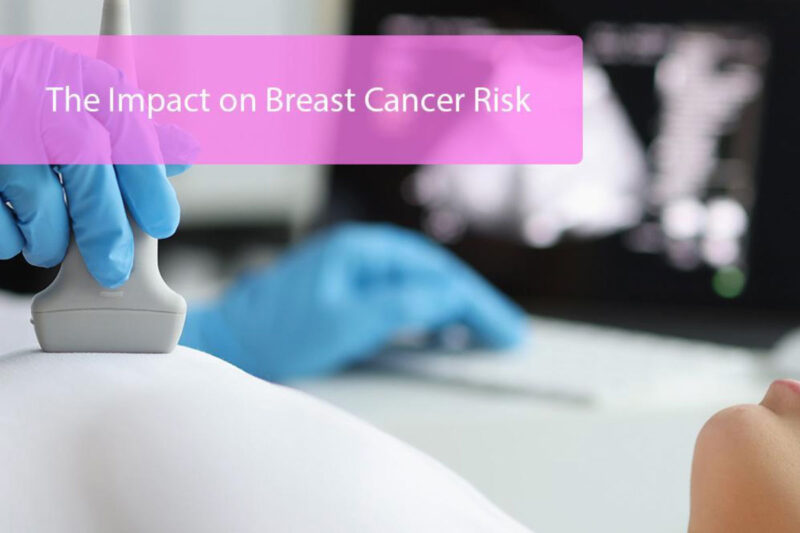
The Risks Associated With Hereditary Breast Cancer Risk
The heightened risk associated with BRCA mutations isn’t limited to just an increased likelihood of developing cancer; these mutations also influence the age at diagnosis and the likelihood of developing cancer in both breasts. Furthermore, BRCA1 mutations, in particular, are often associated with more aggressive forms of breast cancer, known as triple-negative breast cancer, which can be more challenging to treat.
The hereditary nature of BRCA mutations is critical to understanding genetic risk factors for breast and ovarian cancers. These mutations are passed down from parents to children, following a pattern highlighting the complexity and variability of inherited cancer risk.
Mutations in either BRCA1 or BRCA2 can be classified as:
- Germline Mutations: Inherited from a parent, present in every cell, significantly increasing cancer risk.
- Somatic Mutations: Acquired during an individual’s lifetime, impacting specific cells and often associated with sporadic cancers.
The type and location of the mutation within the gene influence its impact on protein function and, consequently, the associated cancer risk. Some mutations completely disable the protein, while others might partially impair its function, leading to varying degrees of increased risk.
Inheritance of BRCA Mutations
BRCA1 and BRCA2 mutations are inherited in an autosomal dominant fashion. This means that each child of a parent with a mutation in one of these genes has a 50% chance of inheriting the mutation. Importantly, because these mutations can be inherited from the mother or the father, both sides of the family’s health history are relevant when assessing risk.
Despite the 50% chance of inheritance, the manifestation of cancer in those who carry BRCA mutations is not guaranteed. This variability is due to penetrance, which refers to the likelihood that a person carrying a particular genetic mutation will exhibit the trait or disease associated with that mutation. For BRCA mutations, penetrance is considered high, but it is not absolute, meaning not all who inherit the mutation will develop cancer.
Patterns of Cancer Risk
BRCA mutations significantly increase the risk of developing breast and ovarian cancers. Still, they also increase the risk for other types of cancer, including prostate cancer in men and pancreatic cancer in both men and women. The lifetime risk for breast cancer in individuals with BRCA1 mutations is estimated to be between 55% to 70%, while for BRCA2 mutation carriers, it is around 45% to 70%. For ovarian cancer, the lifetime risk for BRCA1 mutation carriers is between 39% to 46%, and for BRCA2, it is between 12% to 20%.
BRCA1: Carriers face a 45-55% risk of breast cancer and a 30-40% risk of ovarian cancer, compared to roughly 12% and 1.3% in the general population, respectively.
BRCA2: Mutations in BRCA2 translate to a 30-40% lifetime risk of breast cancer and a 15-20% risk of ovarian cancer, highlighting the gene’s significant impact.
It is important to remember that these are population-level estimates, and individual risk assessment requires comprehensive genetic counseling and consideration of additional factors.
Prevalence in Specific Populations
The likelihood of carrying a BRCA mutation varies significantly across different populations. BRCA mutations are relatively rare in the general population, with an estimated prevalence of about 1 in 400 to 1 in 800 people. However, certain ethnic and geographic populations have a higher prevalence due to founder effects, where a mutation appears in the ancestor of a specific group and is passed down through generations
One of the most well-documented examples of this phenomenon is in people of Ashkenazi Jewish descent, where the prevalence of BRCA mutations is significantly higher, estimated to be about 1 in 40. Other populations, including Norwegian, Dutch, and Icelandic peoples, also have higher than average rates of BRCA mutations due to similar founder effects.
Identifying individuals who may benefit from BRCA genetic testing is a crucial step in the early detection and prevention of hereditary breast and ovarian cancers. BRCA testing can provide valuable information for making informed decisions about cancer surveillance and risk-reduction strategies.

Criteria for BRCA Genetic Testing
Family History and Personal Risk Factors
- Breast Cancer History: Individuals with a family history of breast cancer, especially if diagnosed before age 50, should consider BRCA testing. This includes having multiple family members on the same side of the family with breast or ovarian cancer.
- Ovarian Cancer: Any family history of ovarian cancer increases the risk and warrants consideration for testing.
- Male Breast Cancer: A history of breast cancer in a male relative is a strong indicator for BRCA mutations.
- Ashkenazi Jewish Heritage: Individuals of Ashkenazi Jewish descent are at a higher risk of having BRCA mutations and should consider genetic testing, particularly if they have a personal or family history of breast or ovarian cancer.
- Multiple Cancers: A personal or family history of multiple cancers, including pancreatic and prostate cancer, can indicate a BRCA mutation.
- Known Family Mutation: Individuals with a known BRCA mutation in the family are at a 50% risk of inheriting the mutation and should undergo testing.
Understanding Your Personalized Risk Landscape
Your individual risk depends on an intricate puzzle of factors, like the specific type of mutation, your family history, and lifestyle choices. Think of it like a personalized risk map, where each piece plays a role in shaping your unique landscape. Understanding this map is key; that is where your doctor comes in.
If you have a strong family history of breast, ovarian, or other BRCA-associated cancers, discussing genetic testing with your doctor is crucial. This test can provide valuable information about your individual risk profile, guide personalized prevention strategies, and potentially offer peace of mind if the test is negative.
This test, conducted through a simple blood or saliva sample, analyzes your BRCA1 and BRCA2 genes for potential mutations. A positive result signifies an increased risk, while a negative result can offer valuable peace of mind, indicating a lower, population-based risk.
The Process of BRCA Genetic Counseling and Testing
Genetic Counseling
Before undergoing BRCA testing, genetic counseling is highly recommended. Genetic counselors can assess your risk based on your family history and other factors, explain the benefits and limitations of testing, and help you make an informed decision about whether to proceed.
Testing Procedure
BRCA testing usually involves providing a blood or saliva sample, which is then analyzed in a lab for the presence of mutations in the BRCA1 and BRCA2 genes.
Interpreting Test Results
- Positive Result: Indicates the presence of a BRCA mutation, conferring a higher risk of developing breast and ovarian cancers. This result can guide further prevention and monitoring strategies.
- Negative Result: A negative result means no BRCA mutation was found. However, it does not eliminate the risk of breast or ovarian cancer, especially if there’s a strong family history suggesting other genetic factors may be at play.
- Variant of Uncertain Significance (VUS): Sometimes, the test finds a change in the BRCA genes that has not been previously associated with cancer. This result can be challenging to interpret and may require further analysis or testing in the future.
After the Test: Making Informed Decisions about Hereditary Cancer Prevention
Testing positive for a BRCA mutation is undoubtedly impactful and can elicit a range of emotions. Working closely with healthcare providers and genetic counselors, individuals can explore options such as increased surveillance, prophylactic surgery, or chemoprevention to manage their cancer risk. Importantly, decisions about risk management should be personalized, considering the individual’s risk tolerance, family planning considerations, and overall health.
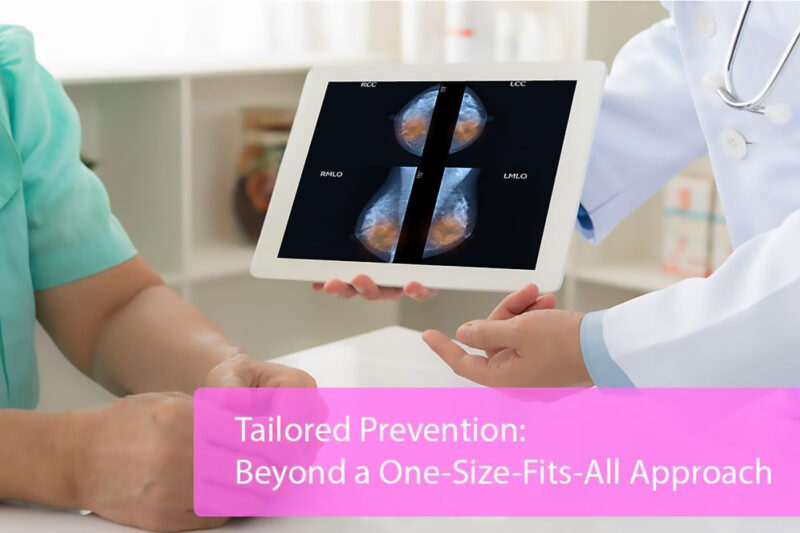
Tailored Prevention: Beyond a One-Size-Fits-All Approach
Remember, no two-risk maps are identical. What works for one woman might not be the best fit for another. It is crucial to work closely with your doctor to build a personalized prevention plan based on your unique risk factors, family history, and personal values.
Empowering Strategies
Here are some potential avenues for proactive prevention that you might explore:
- Enhanced Screening: Starting mammograms earlier and increasing their frequency can provide a valuable advantage in detecting potential issues at their earliest stages. The specific screening schedule will be tailored to your individual risk profile.
- Chemoprevention: Certain medications, like tamoxifen or raloxifene, have been shown to significantly reduce breast cancer risk in individuals with BRCA mutations. These medications work by interfering with the effects of estrogen, a hormone that can fuel breast cancer growth. Remember, medication comes with potential side effects, so discussing their suitability with your doctor is crucial.
- Dietary and Lifestyle Modifications: While no specific diet guarantees cancer prevention, adopting a healthy lifestyle that includes a balanced diet with plenty of fruits, vegetables, and whole grains, maintaining a healthy weight, and engaging in regular physical activity can contribute to overall well-being and potentially reduce cancer risk.
- Preventive Surgery: In some high-risk cases, after careful consideration of your individual context and values, opting for prophylactic mastectomy (removal of breast tissue). Remember, this is a major decision with potential impacts on your physical and emotional well-being. Discuss it thoroughly with your doctor and explore all available information and support before making a choice.
Conclusion
Understanding the link between the BRCA gene and hereditary breast cancer is crucial for those with a family history of the disease. Knowledge about one’s BRCA status, coupled with the guidance of healthcare professionals, can empower individuals to make informed decisions about their health, potentially saving lives through prevention and early detection strategies. As research advances, the hope is that more options will become available, offering even greater possibilities for managing hereditary cancer risk.
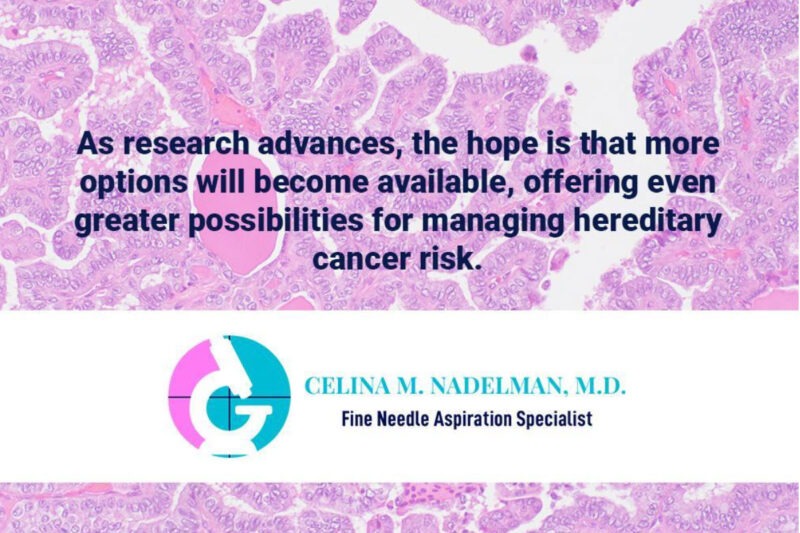
References
- Howlader N, Noone AM, Krapcho M, et al. SEER Cancer Statistics Review, 1975–2017, National Cancer Institute. Bethesda, MD, https://seer.cancer.gov/csr/1975_2017/, based on November 2019 SEER data submission, posted to the SEER web site, April 2020.
- Kuchenbaecker KB, Hopper JL, Barnes DR, et al. Risks of breast, ovarian, and contralateral breast cancer for BRCA1 and BRCA2 mutation carriers. JAMA 2017; 317(23):2402–2416.
- Antoniou A, Pharoah PDP, Narod S, et al. Average risks of breast and ovarian cancer associated with BRCA1 or BRCA2 mutations detected in case series unselected for family history: A combined analysis of 22 studies. American Journal of Human Genetics 2003; 72(5):1117–1130.
- Chen S, Parmigiani G. Meta-analysis of BRCA1 and BRCA2 penetrance. Journal of Clinical Oncology 2007; 25(11):1329–1333.
- Brose MS, Rebbeck TR, Calzone KA, et al. Cancer risk estimates for BRCA1 mutation carriers identified in a risk evaluation program. Journal of the National Cancer Institute 2002; 94(18):1365–1372.
- Finch A, Beiner M, Lubinski J, et al. Salpingo-oophorectomy and the risk of ovarian, fallopian tube, and peritoneal cancers in women with a BRCA1 or BRCA2 mutation. JAMA 2006; 296(2):185–192.
- Levine DA, Argenta PA, Yee CJ, et al. Fallopian tube and primary peritoneal carcinomas associated with BRCA mutations. Journal of Clinical Oncology 2003; 21(22):4222–4227.
- Tai YC, Domchek S, Parmigiani G, Chen S. Breast cancer risk among male BRCA1 and BRCA2 mutation carriers. Journal of the National Cancer Institute 2007; 99(23):1811–1814. [PubMed Abstract]
- Levy-Lahad E, Friedman E. Cancer risks among BRCA1 and BRCA2 mutation carriers. British Journal of Cancer 2007; 96(1):11–15.


